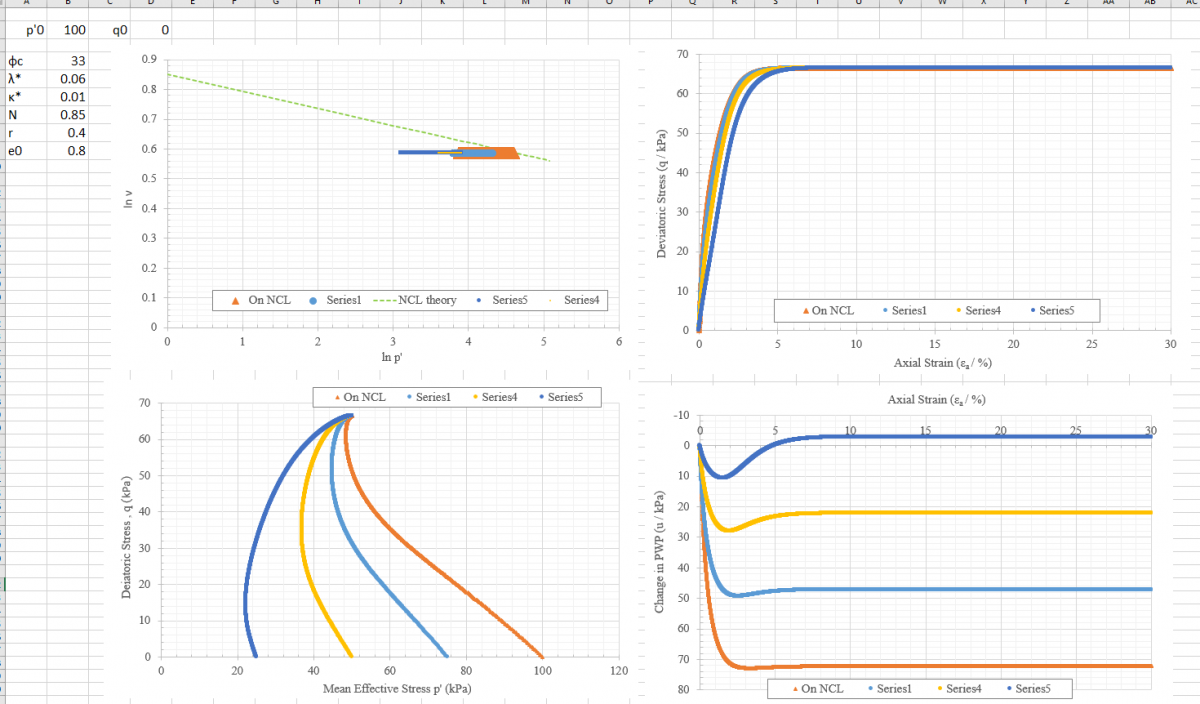Hello all,
i have another question regarding the calibration process. Why do the initial void ratios differ between the input file and the output from excalibre? What is done during the calibration proccess regarding the initial void ratios?
And they only change for the triaxial tests, not for the oedometr.
Because when changing the initial void ratios in the excel input sheet to the magnitudes of the excalibre ouput, also the hypoplastic parameters will change.
Regards Marco




Dear Marco, your observation is correct.
The reason is that way too often void ratios measured in triaxial tests are not consistent with those measured in oedometric tests and model calibration is then inconsistent: for this reason, ExCalibre also tries to update void ratios to get as close as possible match of stress-strain curves. Oedometer is taken as leading (void ratios as given) and triaxial is then updated.
Of course, you may wish to not accept this selection, and then you can manually input the true void ratio to the “recalculate” routine. In recalculate, void ratios will not be updated so you may play around and fine-tune your parameters. regards David
Thanks David.
But what i tried then, was to change the inital void ratios in the input file. I used the updated values from the first automatic calibration. This result in new hypoplastic parameters and e.g. the oedometer curve matches much better, using the new hypoplastic parameters, with the measurement data. Another observation was, that usually the combination of the new hypoplastic parameters (got with updated inital void ratios) and the measured void ratios result in the best fitting with the measurement data with ExCalibre.
For geotechnical investigations, shouldn’t it be better then to use the hypoplastic parameters received with the input of the updated void ratios or are my considerations wrong?
And do you know, for what isotropic pressure level the initial void ratio of the oedometer is provided?
Kind regards
Marco
I made a small mistake in the last reply, when i wrote “Another observation was, that usually the combination of the new hypoplastic parameters (got with updated inital void ratios) and the measured void ratios result in the best fitting with the measurement data with ExCalibre.”. The best results are received with the new hypoplastic parameters, hence only by updating the initial void ratios of the input file.
Hi Marco, thanks for thorough testing. Actually, ExCalibre algorithm is quite complex and with such a complex model as hypoplasticity, I can imagine you can get even better fit than ExCalibre initially provides. It is an interesting observation that an “iteration” of using updated void ratios in the input leads to even better fit. We might include it into algorithm itself at a later stage.
For oedometer, void ratio corresponds to epsilon_ax=0, it is up to you at which stress you assume epsilon_ax=0. It can be at zero stress, or after the initial loading step, depends on your choice.
Hi David,
i investigated some more materials to see, if my latest observations were right or if it was just the case for this one material. After comparing the results of the materials it turned out, that this “iteration” of using the updated void ratios in the input sometimes, but not always lead to a better fitting. So there was no clear consistency between the results of the three materials i analysed. If i will observe something new, i’ll let you know.
Best regards
Marco